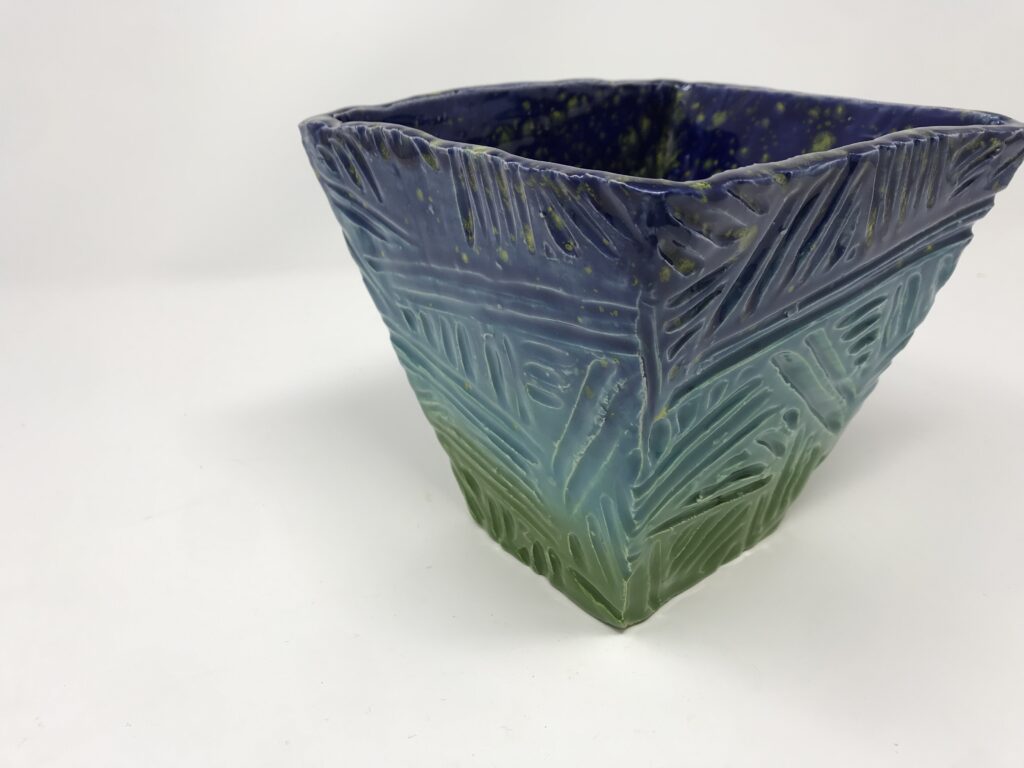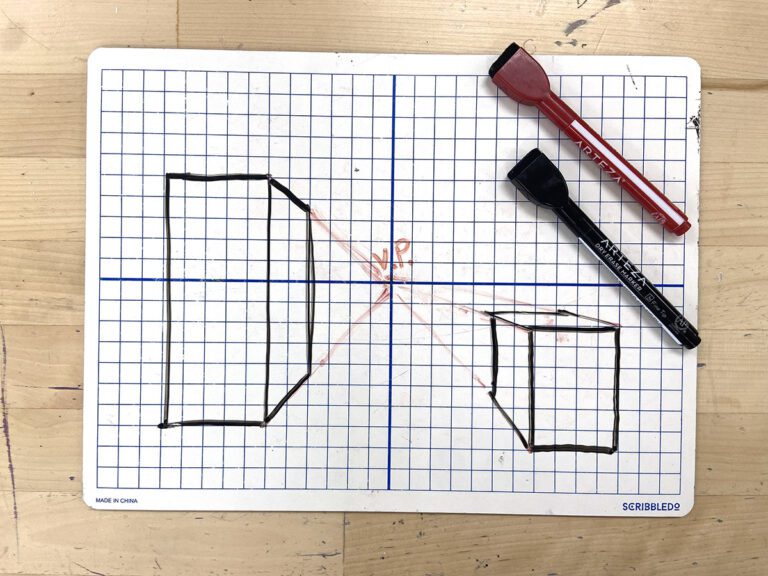When it comes to glazing in the classroom, it’s not uncommon to find that more focus is put on the building of the clay piece rather than the finish. While in some regards, this makes sense as you need to have a clay piece built to glaze it, this often means the glazing process is an afterthought. Yes, glazing is one of the most magical parts of the ceramic process, but it’s important to understand its intricacies.
There are so many different techniques and concepts to understand about glazing, and this article won’t cover them all. However, it will provide you with a basic understanding to help you feel more comfortable with the glazing process in your art room!
What is Glaze?
Glaze can be thought of as a glass coating that fuses to the ceramic surface during firing. It seals the piece making it stain-resistant and, depending on the glaze, food safe. Glazes can take many forms: they can be either clear transparent or, with the addition of metal in any of several forms, in a rainbow of colors. They may also be glossy or matte, translucent or opaque, smooth, or even textured.
Uses of Glaze:
- Decorating
- Waterproofing
- Strengthening

Know Your Clay Body
Before purchasing glaze, you must know the types of clay bodies students will be using in your classroom. Low-fire clay bodies are commonly used in the classroom setting. No matter what clay body you are using, it is essential that your glaze fits. By “fit,” we mean that the proper glaze is used for the clay body. For example, low fire glazes should be used on low fire clay. If you accidentally put a high fire glaze on a low fire clay body, the result is not going to come out as planned.
Learn more about Glazing with PRO Learning.
During the firing process, both the clay body and glaze expand because of heat. If they are not expanding together at the appropriate temperatures, problems arise. These problems aren’t always visible on the clay surface but live within the ceramic walls and, over time, can become problematic.
To help you pick the right types of clay bodies and glazes, make sure you are paying attention to temperatures.
Use this list to help:
- Low Fire: Cone 04 to Cone 06 (1828 – 1945°F)
- Mid Range: Cone 4 to Cone 7 (2167 – 2264°F)
- High Fire: Cone 8 to Cone 14 (2305-2530°F)
Visualize Glaze Coverage

Certain types, colors, and brands of commercial glazes don’t always turn out the same. For example, some glazes are more opaque than others, while others are more translucent. Knowing how glazes are going to turn out is one of the many reasons it’s important to create test tiles, but it’s also important to note that certain glazes are going to require a different amount of coverage.
While it’s good to abide by the rule of applying three coats of glaze for full coverage, this isn’t always going to be the case. Some colors are going to look best with four coats. Some colors might need to be layered with other glazes to get the desired effect. It’s important to know how glaze colors are going to turn out to best help our students in the creating process. Consider creating sample glaze tiles that show how different coats of glaze affect the final result. To make your students feel even more comfortable with the glazing process, have them practice first!
Reviving Dry Glazes
Have you ever inherited an art room with bottles of dried glaze? It’s unfortunate to think that you’ll have to throw them away because we know how expensive glazes can be. Here’s the good news, you can save these dried glazes! You can do this by adding in small amounts of distilled water. Be careful not to overdo it, as you can thin the glazes out, making them less opaque. Another great solution to help the flow and consistency of dried glazes is to use a gum solution.

Troubleshooting Common Glaze Problems
Have you ever taken a glazed clay piece out of the kiln to find that something isn’t quite right? Maybe it looks like the glaze has pooled up to reveal the bisque surface? Maybe, there are areas on the clay piece that look as if the glaze has flaked off. It’s important to be able to identify these problems when they arise so you can troubleshoot and prevent it from happening again. Here are some of the most common issues with glazing.
- Crazing: Appears to be small cracks on the glaze surface and is a result of the glaze having a higher expansion rate than the clay body.
- Shivering: The opposite of crazing, where the glaze peels or flakes off to reveal the bisque surface. This is due to the glaze having a lower expansion rate than the clay body.
- Crawling: Typically occurs because of bad application of glaze—most commonly due to overapplication. It pools up to expose the bisque surface.
- Pinholes: Appear to be tiny holes in the glazed surface and is a result of a bad firing process. Typically this occurs when the bisque firing results in an underfired clay body, which means that not all of the gasses were able to escape causing it to affect the glaze. This is why it’s important to bisque fire your pieces first and not bisque and glaze your pieces in one firing.
For more ideas on how to fix these common mistakes, check out this information.
Easy Glaze Distribution with Zero Clean Up
Glazing is fascinating, but if you’re new to the process, it can be overwhelming. There is a great deal of chemistry that goes into the complexity of glazing. Just understanding a few of these concepts will help you and your students have a better overall ceramics experience.
What do you find challenging about the glazing process?
What’s your favorite thing about glaze?
Magazine articles and podcasts are opinions of professional education contributors and do not necessarily represent the position of the Art of Education University (AOEU) or its academic offerings. Contributors use terms in the way they are most often talked about in the scope of their educational experiences.





